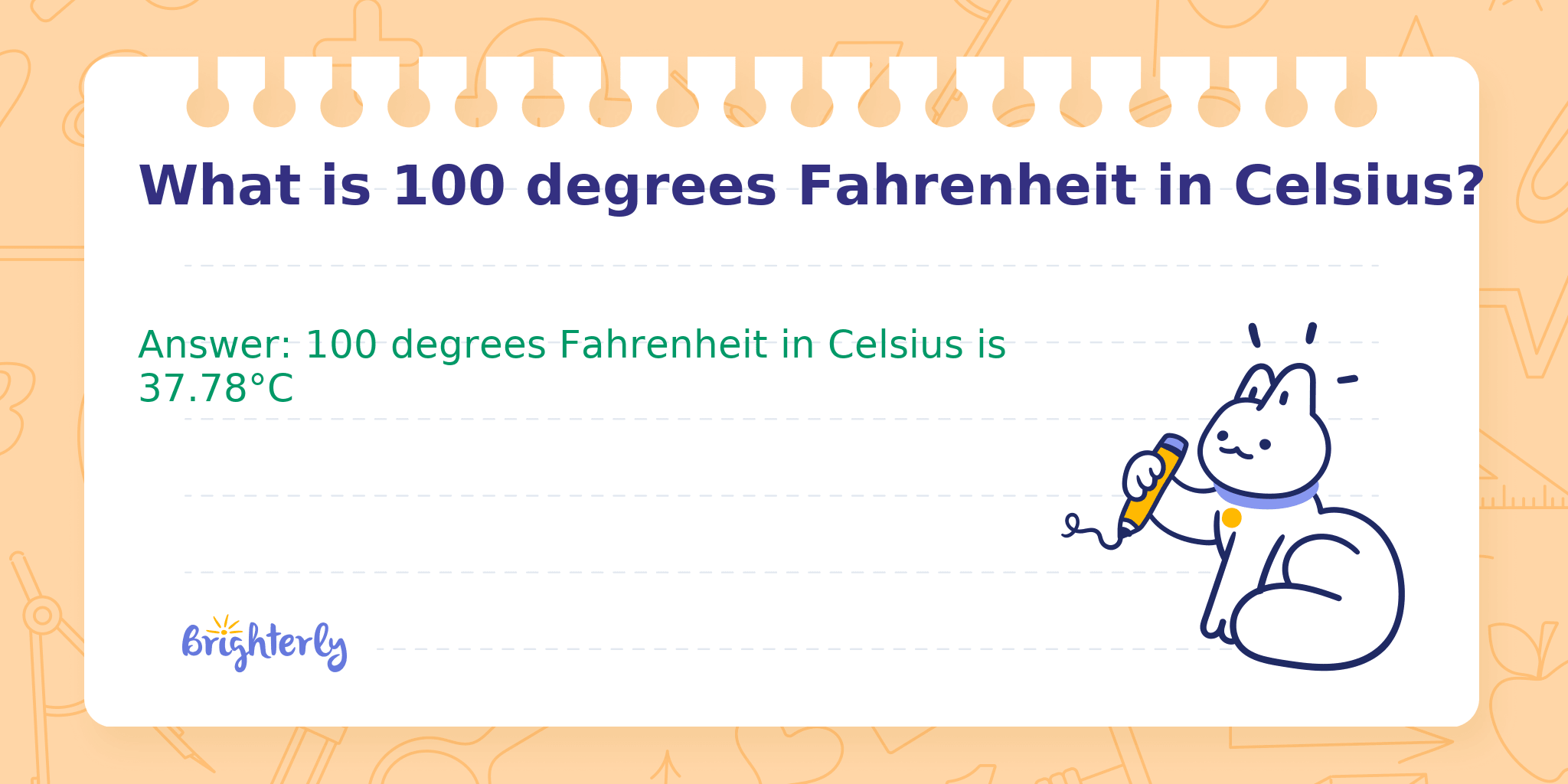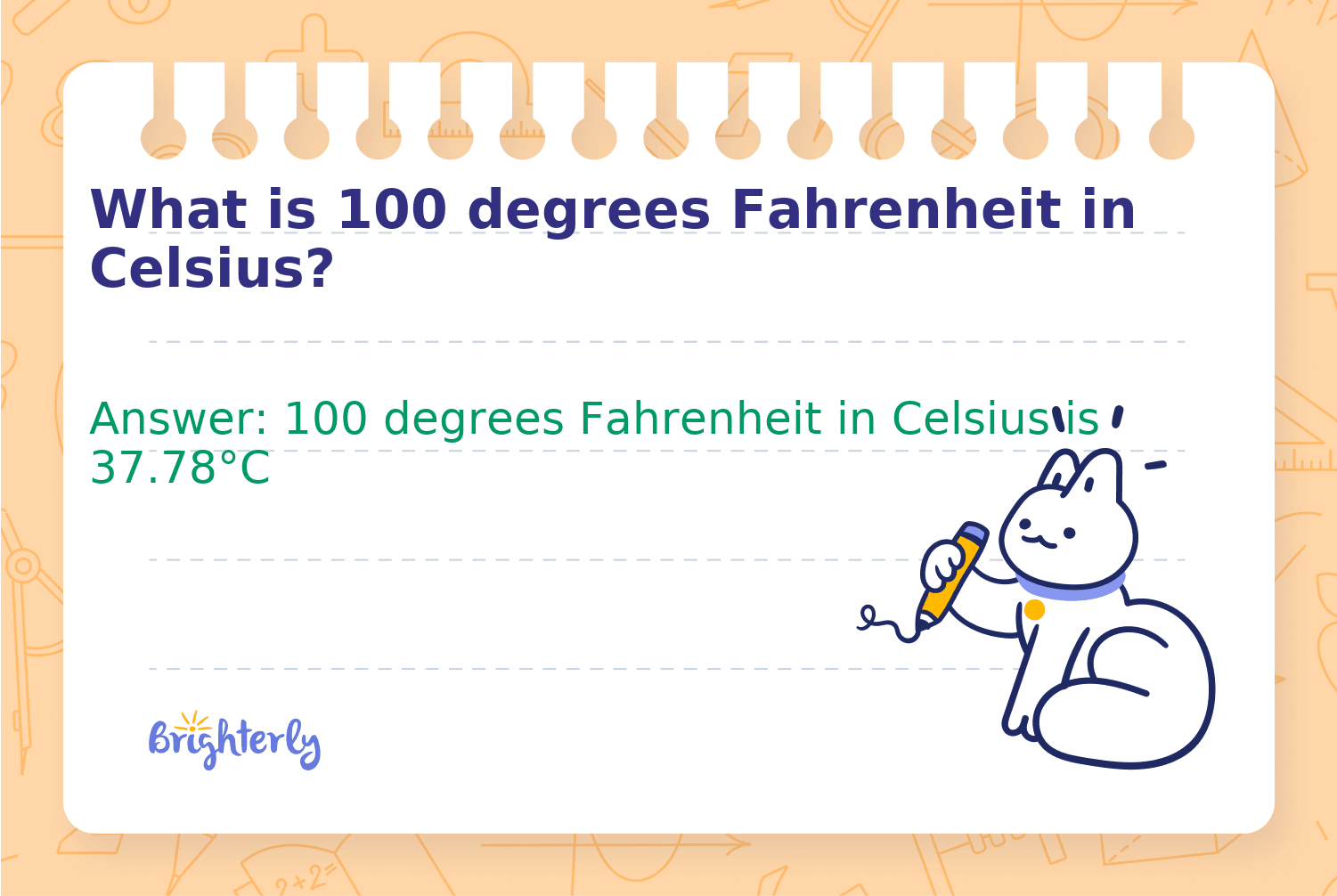
Reviewed by Janice S. Armas
What is 100 degrees Fahrenheit in Celsius?
Answer: 100 degrees Fahrenheit in Celsius is 37.78°C
Converting temperatures from Fahrenheit to Celsius is a common operation in science and everyday life. This conversion helps compare temperature measurements used in different countries. Knowing how to switch between the two scales can be useful for travel, cooking, and science experiments.
Methods
Math Tutor Explanation Using the Fahrenheit to Celsius Formula
The official formula for converting a temperature from Fahrenheit to Celsius subtracts 32 from the Fahrenheit value, then multiplies the result by 5/9.
Step 1: Step 1: Subtract 32 from the Fahrenheit temperature (100 - 32 = 68)
Step 2: Step 2: Multiply the result by 5/9 (68 × 5/9 = 37.78)
Math Tutor Explanation Using Step-by-Step Division Method
This breakdown shows the intermediate calculations for visual clarity.
Step 1: Step 1: Subtract 32 from 100 to get 68
Step 2: Step 2: Multiply 68 by 5 to get 340
Step 1:
Step 2:
Math Tutor suggests: Practice Temperature Conversion Questions
Explore more exercises on converting between Fahrenheit and Celsius to strengthen your understanding of temperature conversions.
FAQ on Fahrenheit and Celsius Temperature Conversions
What is the formula to convert Fahrenheit to Celsius?
Subtract 32 from the Fahrenheit temperature and then multiply the result by 5/9.
Is 100°F a typical human body temperature?
100°F is slightly above the average normal human body temperature, which is around 98.6°F.
How do I convert Celsius back to Fahrenheit?
Multiply the Celsius temperature by 9/5 and then add 32.
Why do some countries use Celsius and others use Fahrenheit?
Celsius is used in most countries because it is part of the metric system, while Fahrenheit is still used in the United States and a few others.
What is the freezing point of water in Fahrenheit and Celsius?
The freezing point of water is 32°F (0°C).


